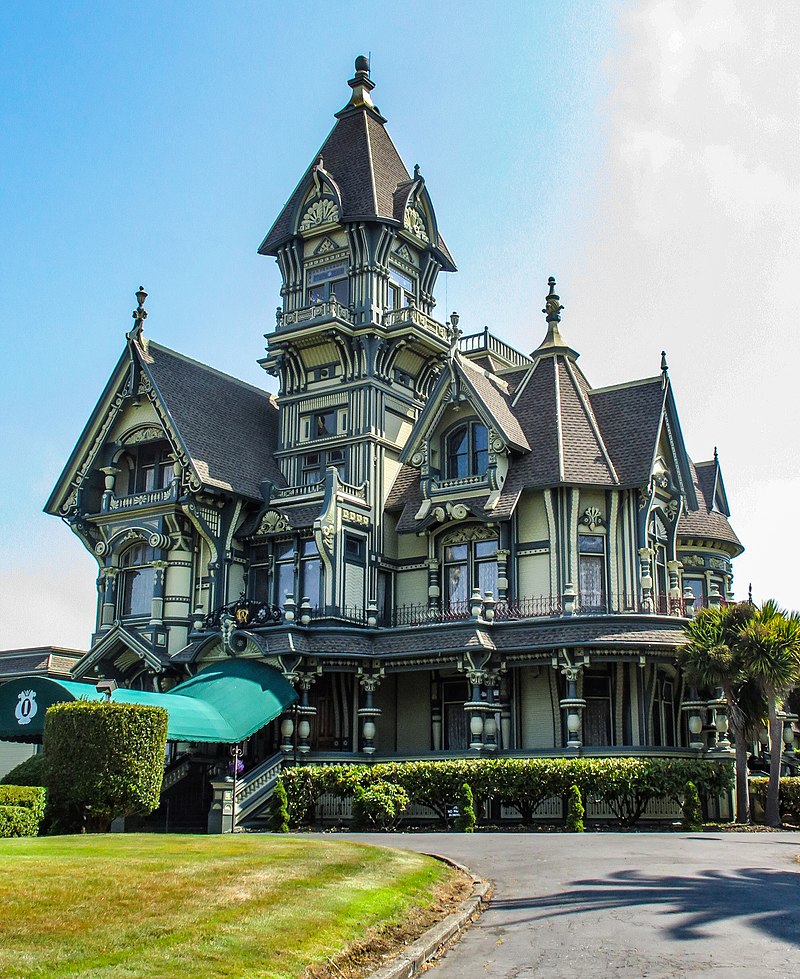There are actually two styles of Queen Anne architecture, the original English style, and the later American revival movement, and they bear little resemblance to each other. I didn’t know this before researching the style, and when I pictured a Queen Anne home it was definitely in the ostentatious American style that I think more people would immediately recognize!
The original British style is much more demure. Named so because these homes were being built during Queen Anne’s reign, it refers to smaller, box-shaped homes that are built out of red brick, and sport features such as staircases, stone door-cases, painted sash windows, and hipped roofs with dormers (a hipped roof has sides that all slope downwards, usually at a gentle angle).


The more well-known American iteration of the style was in vogue from the 1880s to the early 1910s. A very opulent and ornamented style, American Queen Anne houses often feature wrap around porches, bright facades, bay windows, turrets, classical columns, and overhanging eaves.


Why, you might be wondering, was it called Queen Anne if it is obviously significantly different from the original style? It was inspired by a hodge-podge of British styles, such as Jacobean, Elizabethan, and medieval elements, and came to be known as “Queen Anne revival” style despite the fact that the architectural features it was inspired by date earlier than Queen Anne’s reign.

Queen Anne homes were not only grand mansions. The style was also used for public buildings, more unassuming cottages, and even rowhouses. The versatility of this, as well as its decadence, made it extremely popular during the luxury loving Victorian era.
:max_bytes(150000):strip_icc():format(webp)/rowhouse-78517601-57a9aad73df78cf459ef8104.jpg)

Although this style can be too garish, such as the Carson Manor, but I absolutely adore the more sedate examples of the Queen Anne style. I love the wraparound porches, bright colours, and elegant details. It would be a dream to own a Queen Anne one day!
References
https://en.wikipedia.org/wiki/New_World_Queen_Anne_Revival_architecture
https://en.wikipedia.org/wiki/Queen_Anne_style_architecture
https://www.thoughtco.com/queen-anne-architecture-in-the-usa-176003